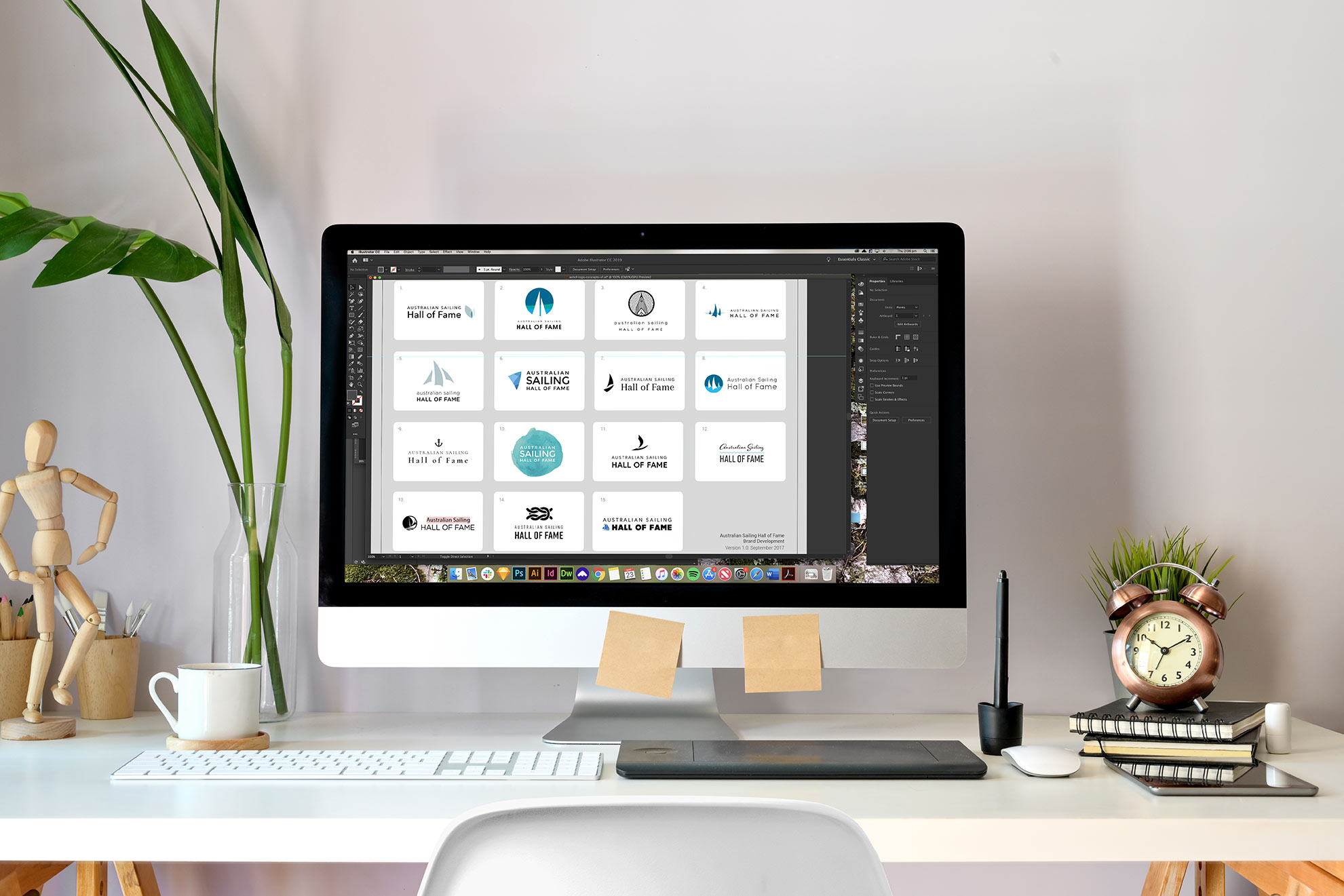Branding
“How long does it take to do a re-brand?”
Never has a question been more worthy of the answer, “How long is a piece of string”, then in answer to this one. Consider all the time people spend pondering what to name their children – a decision which (usually) involves only 2 stakeholders, and is a name choice only.
At its heart, branding, or re-branding is quite like giving birth to a living, breathing being. Granted, you can re-do it again down the track if you’re unhappy with it, or inevitably when the trends change… but its still in the same ballpark – that is, your brand is who your products and people are collectively. In some cases, people are the product – and so the way in which you visually represent your business, and the tone of voice your business uses socially, defines your brand.
When embarking on a branding project from the ground floor, we like to dice it up into parts:
- Audience
- Visual identity
- Tone of voice
Audience
Who are you, and what makes you different? Why do you appeal to your audience over your competitors? Having a clear picture of who your audience are, developing relevant personas allows for a brand journey with the right passengers on-board.
Develop personas of your audience by listing all their attributes.
- What age are they? Their gender? Socio-economic status? Are they parents? Their employment status?
- Which social media channels are they consuming, and what kind of messaging is relevant to them within these environments?
Keep your personas in mind while developing your core ‘big idea’ behind your brand. Understand all the attributes that make up the personas of your audience. Once you grasp who they are, understanding where & how they will interact with your brand – you can really get cracking with developing your brand in earnest.
Visual Identity
Your visual identity is made up of a series of visual devices.
- Logo: including favicons, mono versions & consideration for small sizes.
- Print/Digital collateral: Letterhead, business card, envelopes, flyers, brochures, powerpoint template
- Website design & social media page/s look & feel.
- Packaging & apparel
- Signage
- Email signatures & electronic newsletter (EDM) templates
The big-ticket item, which carries over all of these visual items is of course the logo. It identifies your company and/or product via a symbol, typeface, icon or signature. Logos ultimately derive their meaning from the integrity of the product or service they represent – not the other way around. So, what a logo means is far more important than just what it looks like. It must identify your business in a memorable, recognisable fashion.
Once a logo becomes familiar, then it really comes into its own – evoking emotion & connection to the brand/product experience at a glance.
Keeping a consistency across these devices is paramount to delivering a seamless brand experience. From the get-go, all of your material must be consistent & professionally organised. People should be drawn to your brand and recognise it instantly. Brand guidelines assist in defining the characteristics that make up your brand.
Tone of voice
It is always not what you say, but how you say it. The words used in your communications; be it on your website, social channels and even on the phone tie together to deliver on the brand expectations which leave a the biggest taste in your customers mouths.
I love this tone spectrum for figuring out where you map your customer personas. Having a guide like this helps keep marketing & sales on the same path delivering a consistent brand experience.
Brand Spectrum
Casual & conversationalHigh end corporate
Instinctive & efficientConsidered & sensible
State of the artClassic & familiar
InnovativeStable
JovialSober
AttainableAspirational
Starting a new business and need a new corporate identity? Or perhaps wanting to breathe new life and style into your existing brand? Let’s delve into your target demographic and create branding which aligns with your core values and brings your offering to life.
I have created and refreshed some iconic Australian brands across many sectors. A collaborative approach helps to understand your key differentials and pull together a strong, clever brand concept which aligns with your vision for your business.


